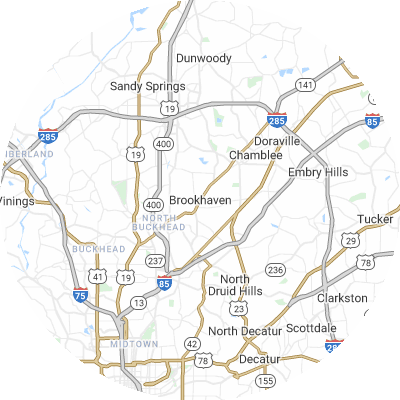Signs You May Need Gutter Guards
Gutter guards aren’t always needed, but indicators of blocked and overflowing gutters are clear. Here are some signals of chronic gutter issues:
- Leaky seams or joints where water leaks from the gutters
- Frequent clogs that cause overflow and water to spill over gutters
- Mold growth, peeling exterior paint, or interior water stains on walls near gutters.
- Soggy ground or visible erosion around your home's foundation
- Visibly damaged, sagging, or misaligned gutters that no longer direct rainwater correctly
How To Choose a Gutter Guard Installer
Assess Their Experience
The right installation company will have extensive experience, including multiple years in business and experience with various brands and models. Experienced companies can properly measure and install gutter guards to meet your distinct needs. Inquire about how long a company has been performing installations and request referrals from local customers.
Verify Proper Licensing and Insurance
Make sure that any businesses you're considering are properly certified, bonded, and insured, holding both general liability and workers compensation coverage. This shields you from liability for possible injuries and accidents. Ask potential providers for current licensing and insurance papers.
Choose Reputable Brands
Look for companies that carry highly reputable gutter guard brands like Gutter Helmet and LeafFilter. Avoid companies that offer only generic no-name guards or their own off-brands, which may not have undergone rigorous quality control testing.
Seek Custom Fit Services
For superior performance, gutter guards need to be sized and cut on-site to match your specific gutter setup. Select a company that uniquely sizes and cuts guards specifically for your home, rather than using generic guards. Properly fitted guards will leave no gaps for debris to get stuck.
Examine Warranties
Top gutter guard companies often offer 20-year or lifetime warranties against rust, clogs, leaks, and other issues. When selecting a company, read through the warranty details for both workmanship and materials guarantees. Warranties provide the best protection for your gutter investment.
Check Reviews and Referrals
Be sure to check online reviews on sites such as the Better Business Bureau (BBB), Yelp, or Google Reviews to see what customers say about their experience. You can also ask neighbors to suggest quality gutter guard businesses near you. When researching potential providers, we recommend selecting companies with a history of consistent positive feedback rather than just one or two reviews.
Types of Gutter Guards
The six primary gutter guard types are as follows:
- Foam guards are lightweight and easy to install. This type of guard catches debris on the foam and keeps it out of your gutter. Foam guards cost roughly $2.47 per linear foot.
- Brush guards are just what they sound like: large brush bristles that sit in your gutters to catch debris while letting water through. Brush guards cost roughly $4.05 per linear foot.
- Screen guards have large holes that let water through while keeping debris out. Screen guards cost roughly $4.51 per linear foot.
- Mesh guards stop debris but let water through. Mesh guards have even smaller holes than screen guards. They're durable and let debris slide off as opposed to sitting on top of the gutters. Mesh guards cost roughly $4.23 per linear foot.
- Micro-mesh guards are usually the most effective. They have smaller holes than standard mesh guards, which allows even less debris through. On average, you can expect to pay $5.30 per linear foot for micro-mesh guards.
- Surface tension guards, also called reverse curve guards, use surface tension to allow water to flow into gutters while debris slides off. Normally, they are visible from the ground. Surface tension guards cost roughly $3.31 per linear foot.












